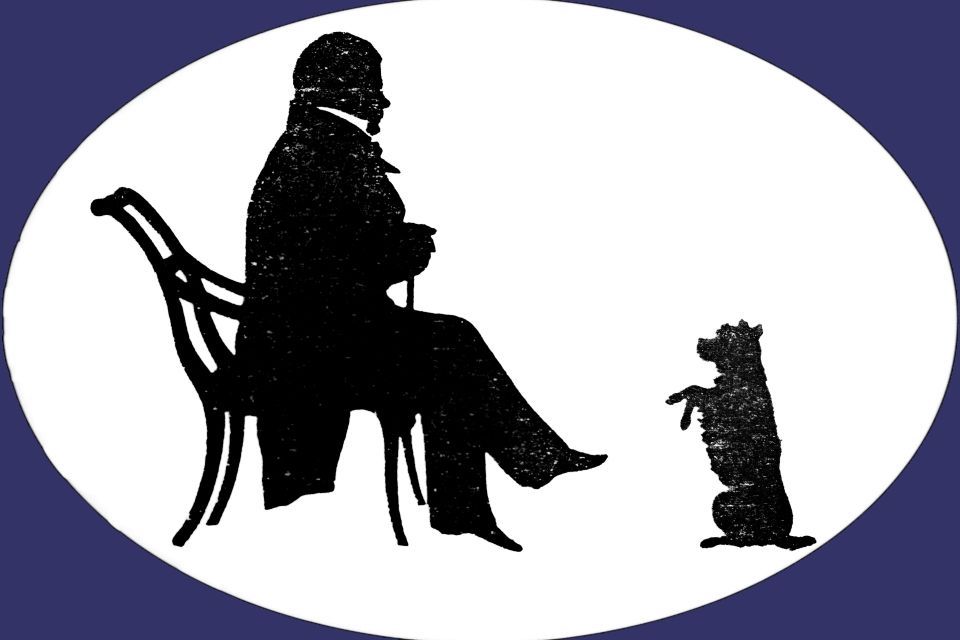Some Religious Questions in The Monastery (1820)
The Very Revd Prof Sir Iain Torrance
Thursday 10th November 2022
Summary of the Talk:
Iain Torrance’s talk explored religious themes in The Monastery, particularly the role of the “Black Book” and how it reflects the tensions of the Scottish Reformation. His analysis focused on the nature of this mysterious book, its historical and theological implications, and how The Monastery contrasts with Old Mortality in its treatment of religious debate.
1. The Black Book: Its Nature and Significance
- The Black Book is a central object in the novel, repeatedly confiscated by monks but mysteriously returned to the Tower of Glendearg.
- It is identified as a vernacular translation of the Holy Scriptures, which was considered heretical at the time.
- The book is small enough to be hidden in garments or under floorboards, raising questions about whether it was printed or handwritten.
- The White Lady (a supernatural figure) ensures its preservation, reinforcing its symbolic importance.
2. Possible Historical Sources of the Black Book
- The setting of The Monastery falls between the Battle of Pinkie (1547) and the 1560s, during the early Scottish Reformation.
- The presence of vernacular Bibles in Scotland at the time was limited due to restrictions. However:
- The Tyndale Bible (1526) could have been an influence, as it was small and widely smuggled into Scotland.
- Murdoch Nisbet’s Scots translation of Wycliffe’s New Testament (c.1520), preserved in the British Library, is an intriguing possibility. It was small enough to be hidden and was later owned by Sir Alexander Boswell, a friend of Walter Scott.
- The Geneva Bible (1560) was a major Reformation text in Scotland but may have been too late to be the model for Scott’s Black Book.
3. The Changing Religious Landscape and Its Reflection in The Monastery
- Torrance contrasts the gentle, humanist debate in The Monastery with the later, more polemical and sectarian religious discourse found in Old Mortality.
- The Geneva Bible, which later became dominant, had three evolving text types with extensive marginal notes that encouraged a more rigid and militant form of Protestantism.
- The early Scottish Reformation had a more moderate approach to scripture and debate, which is reflected in The Monastery.
4. Two Key Religious Debates in The Monastery
- Henry Warden (Reformed preacher) vs. Julian Avenel (nobleman)
- Warden criticizes Julian’s handfasting (informal marriage) and argues for a view of marriage based on natural law and moral responsibility.
- The argument is remarkable because it is based not on strict Protestant theology but on universal ethical principles.
- Henry Warden vs. Father Eustace (Catholic monk)
- The two recognize each other from their student days, showing that both Catholic and Reformed traditions stem from the same intellectual roots.
- Their debate highlights the dangers of extremism—whether from rigid Catholic hierarchy or unchecked individual Protestant interpretation.
- Torrance suggests that Walter Scott portrays early Reformation debates as passionate but still reasoned, whereas later sectarian conflicts became bitter and destructive.
Key Takeaways:
- The Monastery presents the Scottish Reformation as a delicate transition, with an emphasis on scholarship and debate rather than sectarianism.
- The Black Book is symbolic of access to scripture and theological transformation, possibly inspired by Murdoch Nisbet’s translation.
- Scott captures a moment in history before religious discourse hardened into the divisive conflicts seen in Old Mortality.
Download the [transcript]
Download the [transcript]


